Anthuriums, with their vibrant heart-shaped blooms and glossy green leaves, are not only stunning but also relatively low-maintenance when provided with the right care. These tropical beauties, commonly known as the “Flamingo Flower” or “Laceleaf,” have become popular choices for indoor gardening enthusiasts. If you are wondering how to get these stunning flowers to bloom all year round, we’ve got you covered with all the tips from watering to fertilizing.
Take Care Of Anthurium
1. Watering
Anthuriums thrive in a consistently moist but not waterlogged environment. You should water the plant only when the top inch of the soil feels dry to the touch. Use a well-draining potting mix to prevent waterlogging, as anthuriums are susceptible to root rot. Plus, it’s also important to avoid overwatering, as it can lead to fungal issues. Ensure proper drainage in the pot and allow excess water to escape, maintaining a balanced moisture level for optimal growth.
2. Light
While anthuriums appreciate bright, indirect light, they can tolerate lower light conditions. Too much direct sunlight can scorch their leaves, so it’s best to provide filtered light or place them in a location where they receive morning sun. If growing indoors, position your anthuriums near a north or east-facing window for the perfect balance of light without risking sunburn.
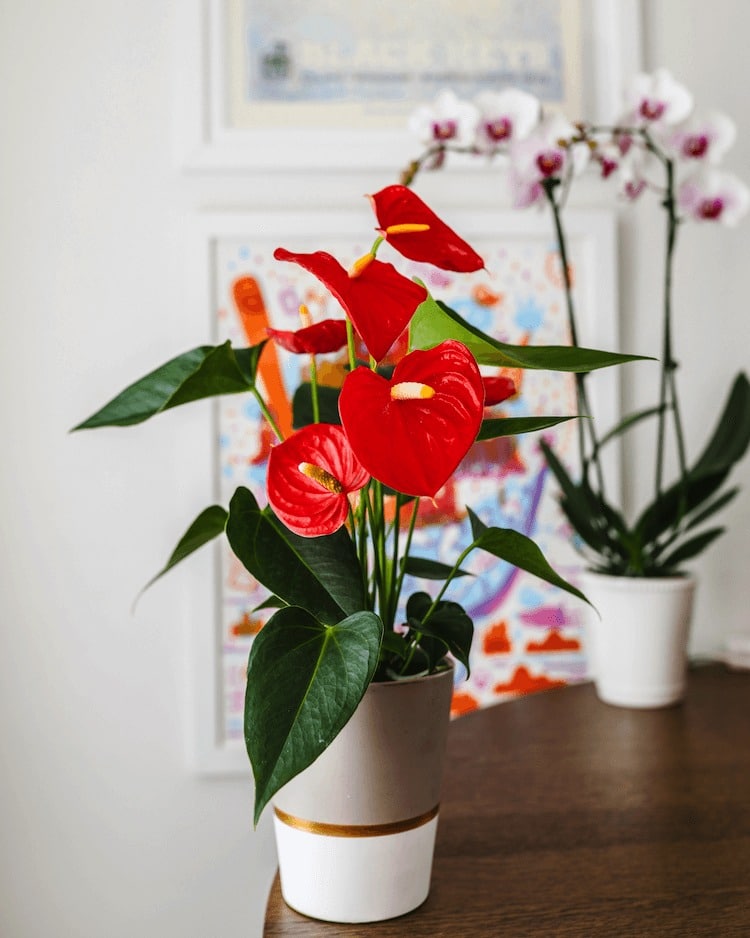
3. Soil
Anthuriums prefer a well-aerated and slightly acidic potting mix. A mix of orchid bark, perlite, and peat moss works well to ensure proper drainage. The soil should retain moisture without becoming waterlogged. Repotting every two to three years can help refresh the soil and provide essential nutrients for continued healthy growth.
4. Fertilizer
During the growing season, typically spring and summer, feed your anthuriums with a balanced liquid fertilizer every six to eight weeks. Dilute the fertilizer to half or quarter strength to prevent over-fertilization. Reduce or cease fertilization in the fall and winter when the plant experiences a period of dormancy.
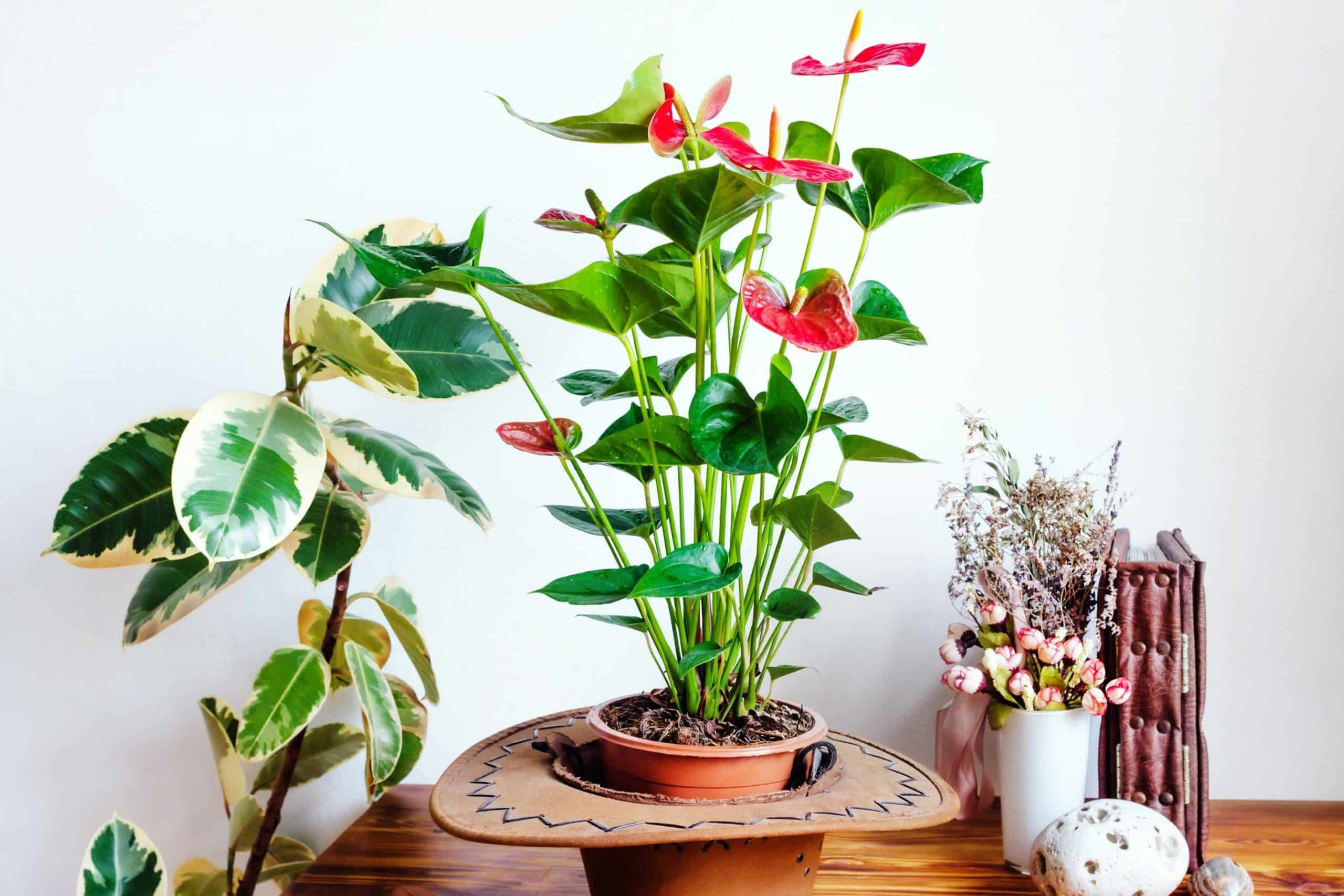
How To Encourage Anthuriums To Bloom
1. Provide Adequate Light
Ensure anthuriums receive bright, indirect light for at least six hours a day. Adequate light exposure is crucial for stimulating flowering. However, avoid direct sunlight, which can cause leaf burn.
2. Maintain Optimal Temperature
Anthuriums thrive in temperatures between 65°F to 80°F (18°C to 27°C). The key is to maintain consistent warmth to encourage flower production. Avoid exposing them to temperatures below 50°F (10°C) or drafts, as it can hinder blooming.
3. Humidity
Anthuriums prefer higher humidity levels. If you live in a dry climate or during the winter months when indoor heating reduces humidity, consider placing a tray filled with water near the plant or using a humidifier.
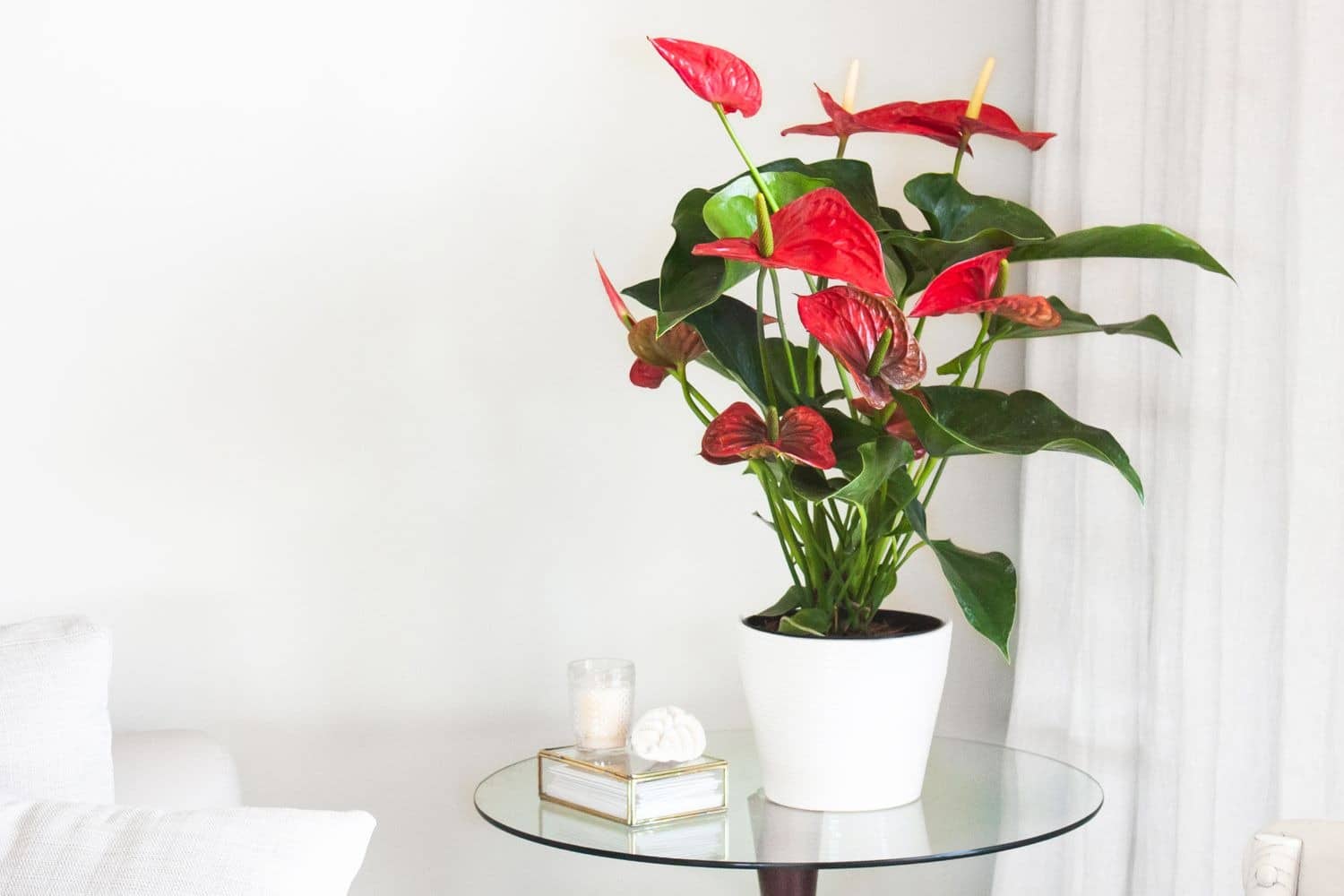
4. Appropriate Fertilization
During the growing season, provide anthuriums with a balanced liquid fertilizer. A fertilizer higher in phosphorus (the middle number on the fertilizer label) can promote flower development.
5. Remove Spent Blooms
To encourage the production of new flowers, you should promptly remove faded or spent blooms. This redirects the plant’s energy towards the development of new buds.
6. Prune And Shape
Pruning anthuriums is needed to maintain a desirable shape and encourage new growth. Be mindful not to remove healthy leaves, as they contribute to the overall vigor of the plant.
7. Monitor Pests
Keep an eye out for pests such as aphids and spider mites, as they can hinder the blooming process. Treat any infestations promptly using appropriate insecticidal soaps or neem oil.
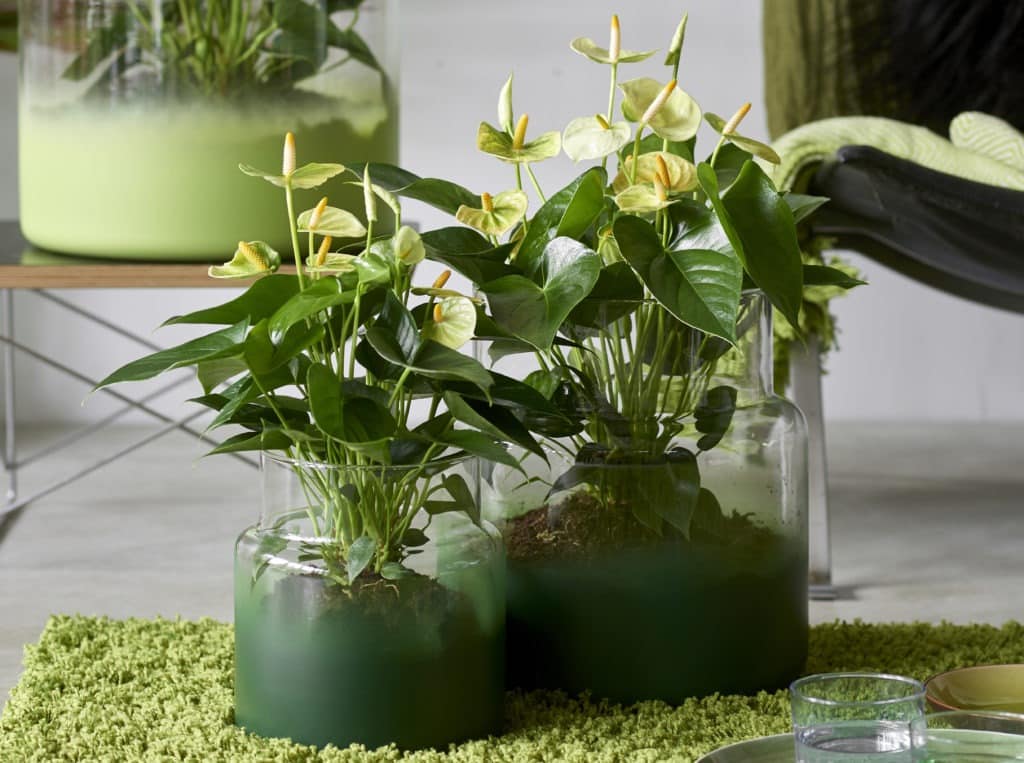
Bonus Tips
- Choose the right container: Anthuriums prefer a slightly snug fit, so choose a container that accommodates the root ball with minimal extra space.
- Grooming and cleaning: Regularly wipe the leaves with a damp cloth to remove dust, keeping them clean and allowing for better light absorption. Groom the plant by removing yellow or damaged leaves to promote overall health.
- Consider the right size: Anthuriums come in various sizes, from compact varieties suitable for tabletops to larger ones that make striking floor plants. Choose a size that complements your space and provides adequate room for growth.
- Watch for signs of stress: Pay attention to the plant’s response to its environment. Drooping leaves may indicate overwatering or underwatering, while yellowing could signal nutrient deficiencies.
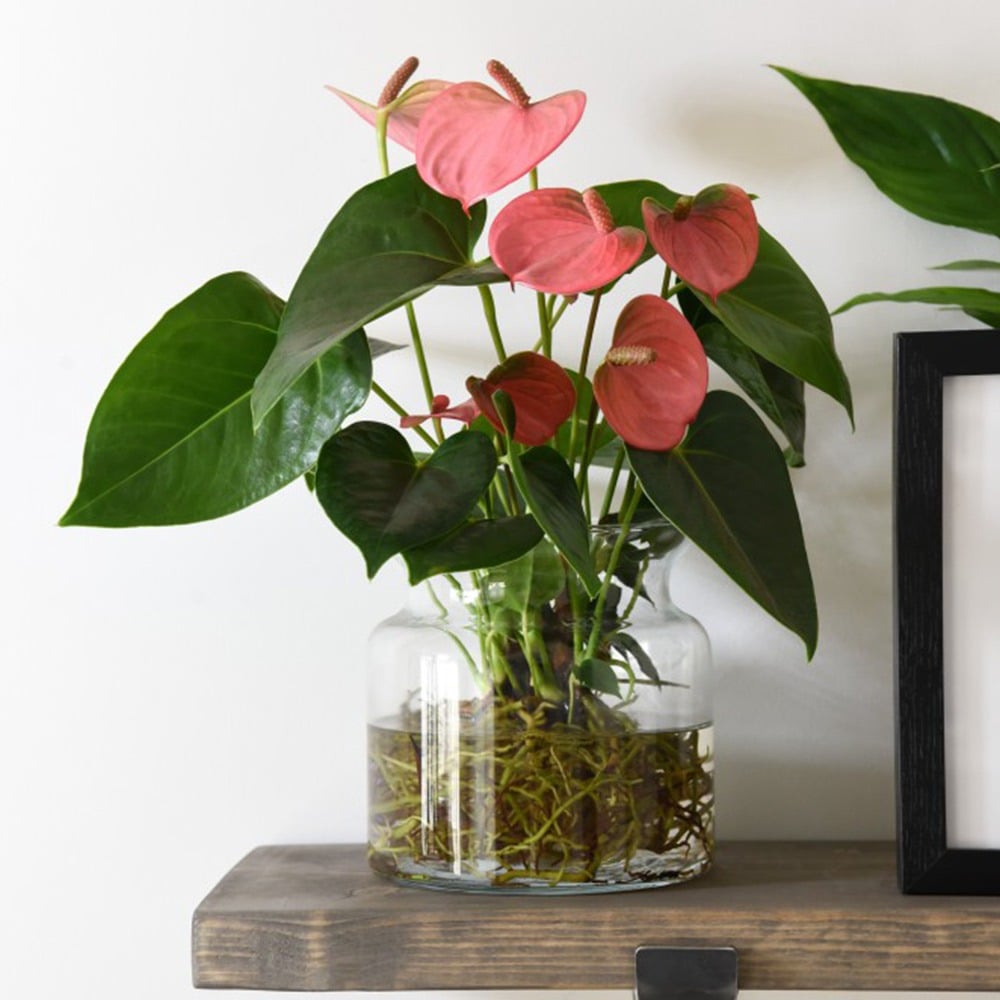
Taking care of anthurium indoors is a breeze, making it a popular choice as a houseplant. If you reside in a hot, sub-tropical or tropical climate, you can also grow anthurium outdoors. Having an anthurium plant thriving in your home or garden will reward you with beautiful, long-lasting flowers. And if you’re interested in the tips to grow other indoor flowers successfully, we have other articles ready for you to check out.
